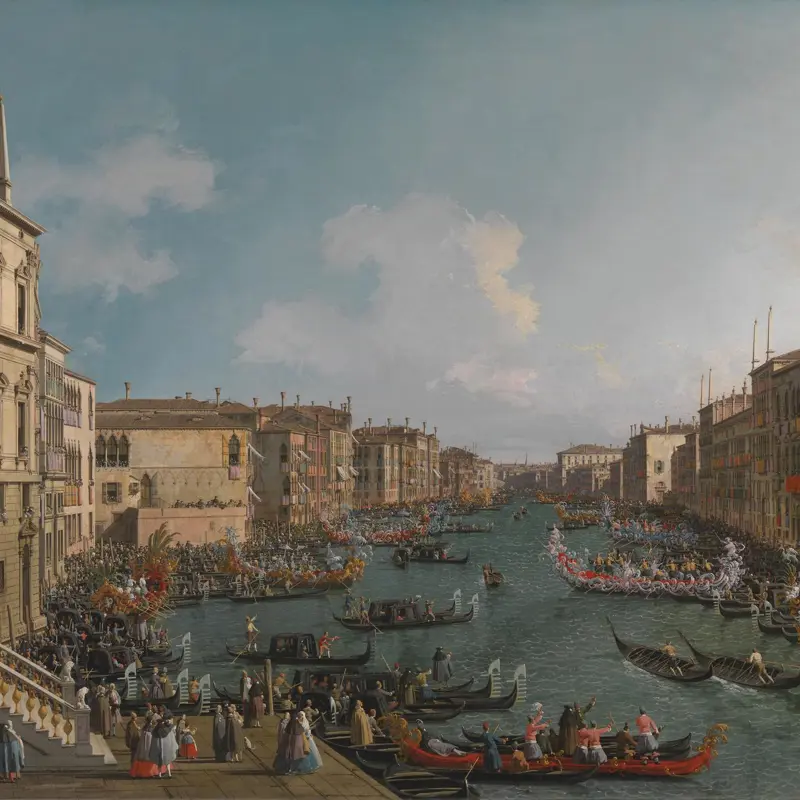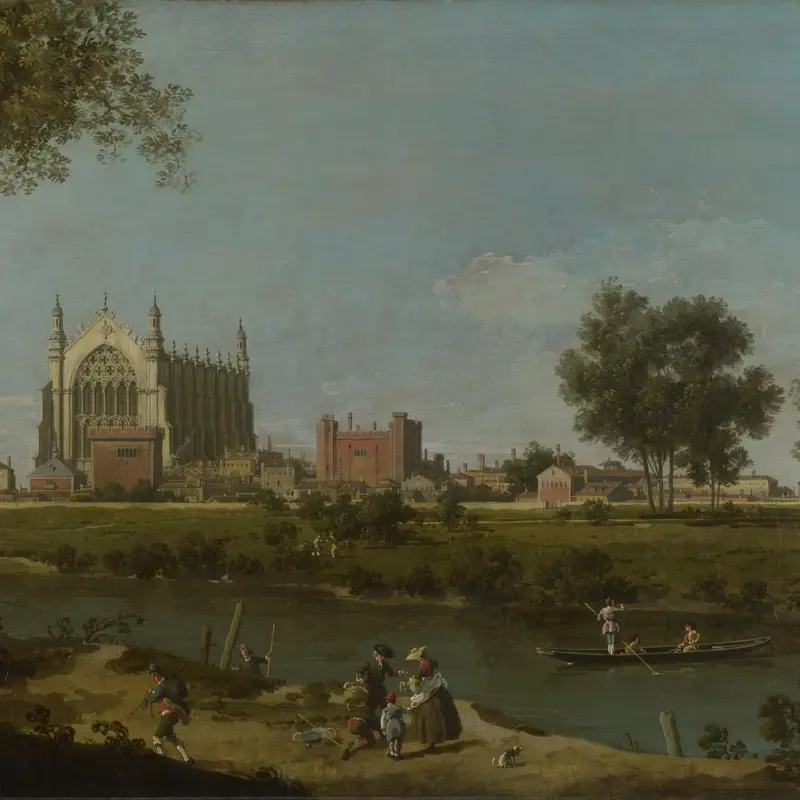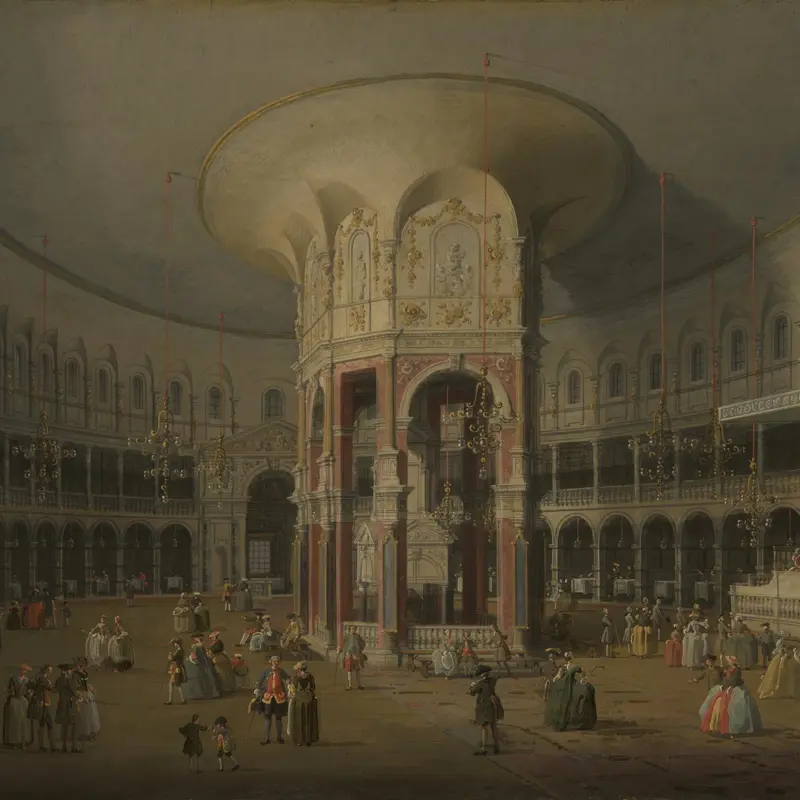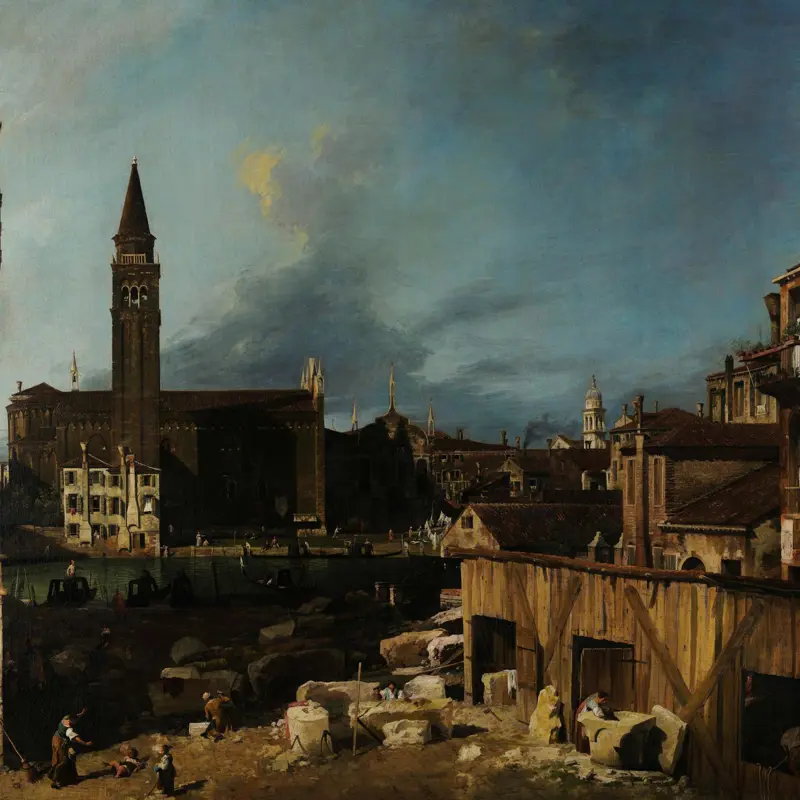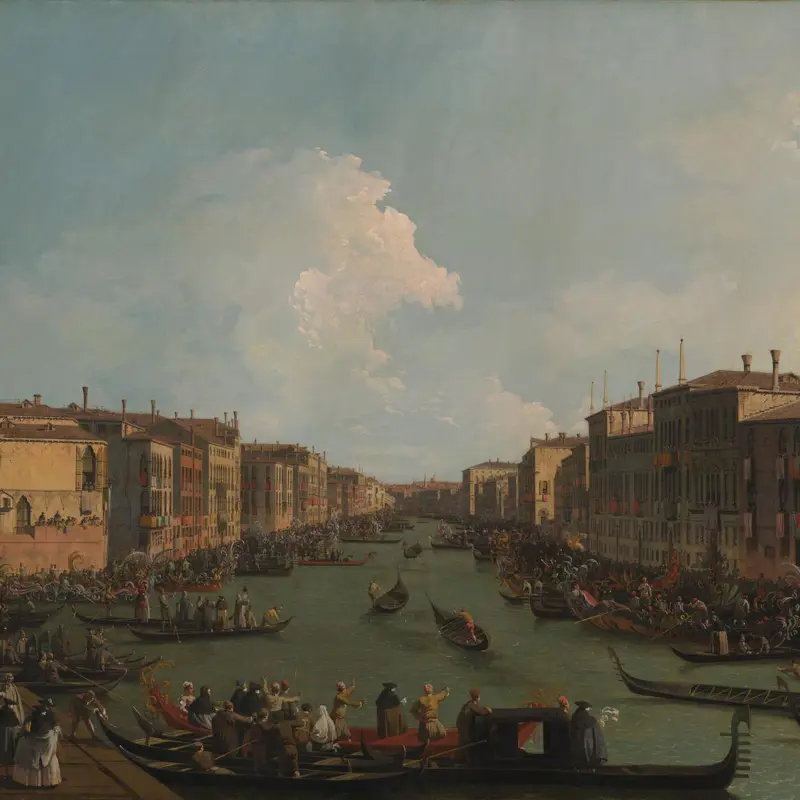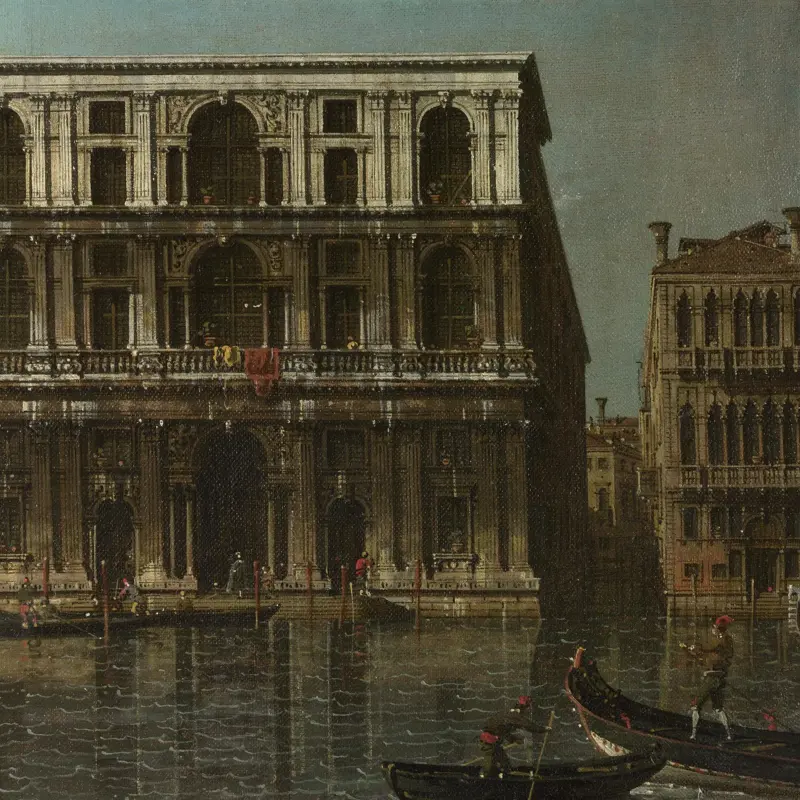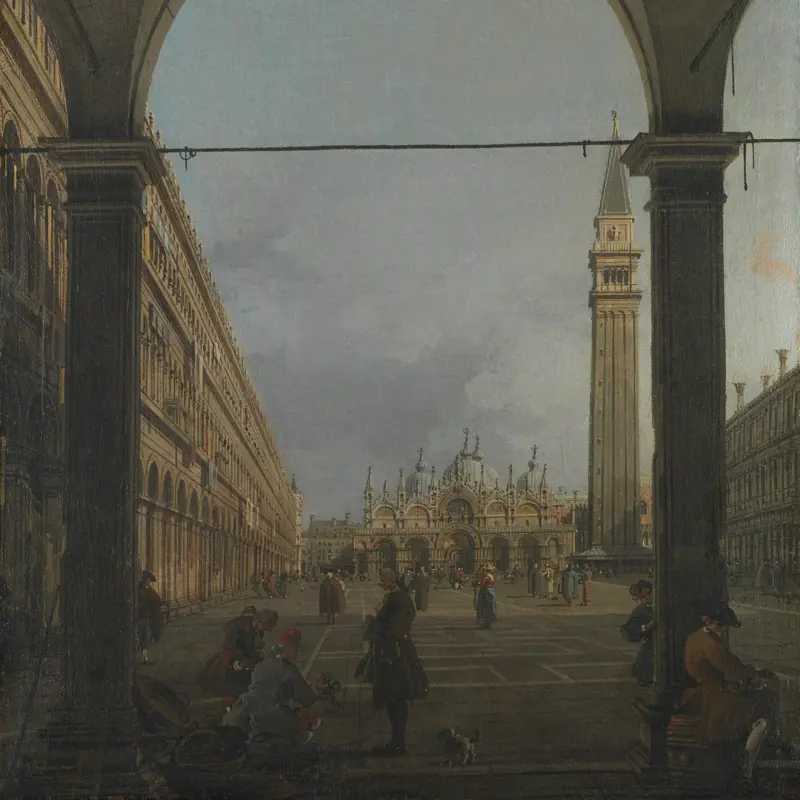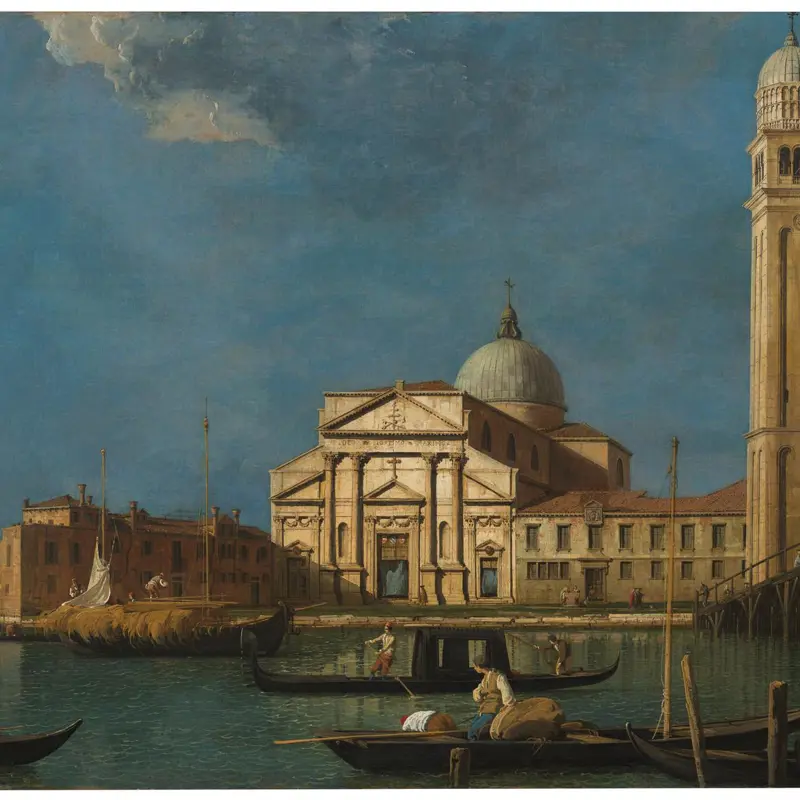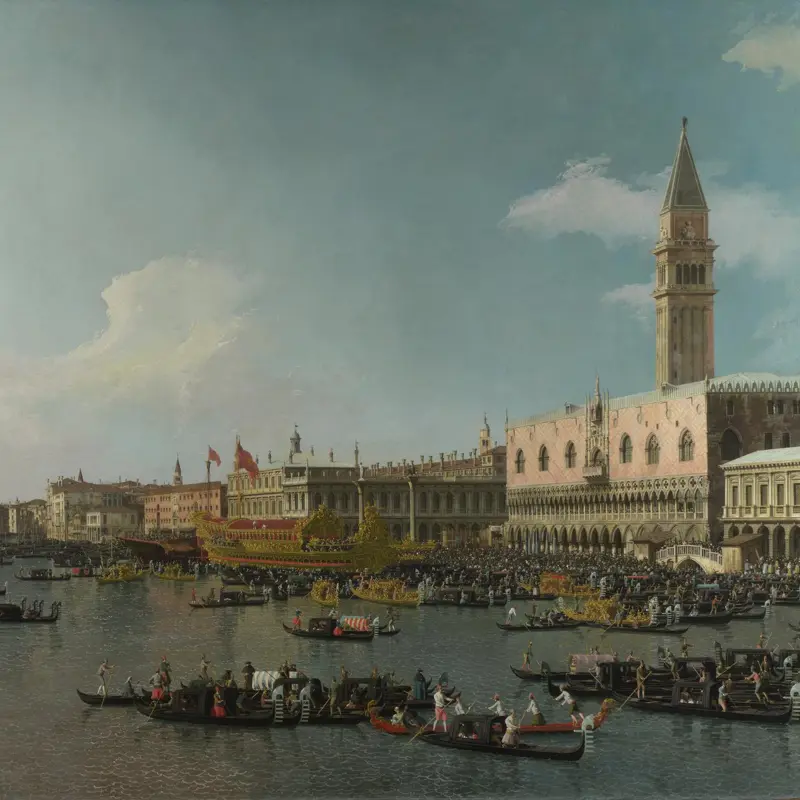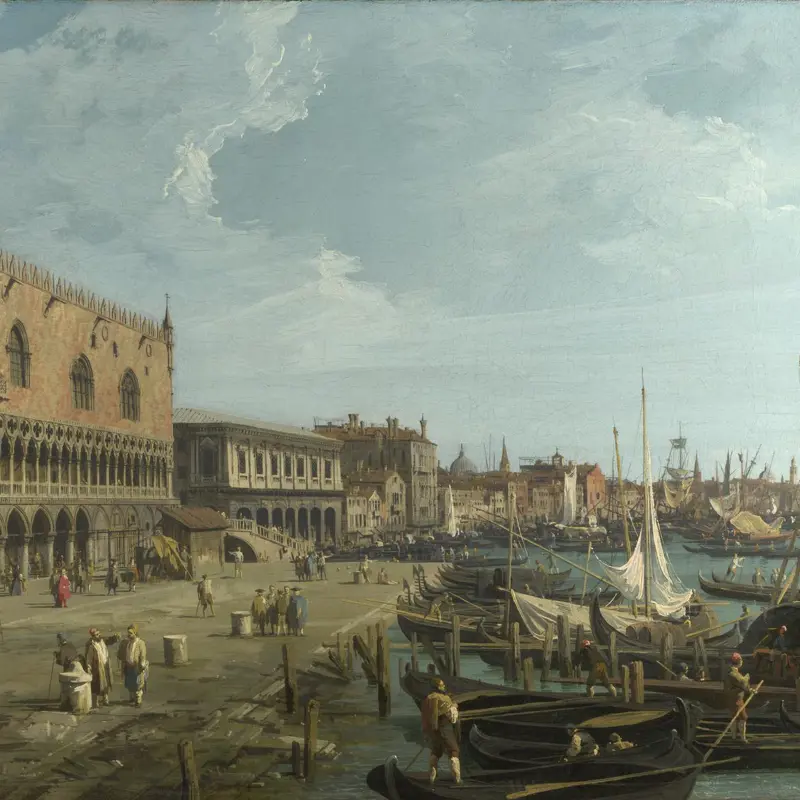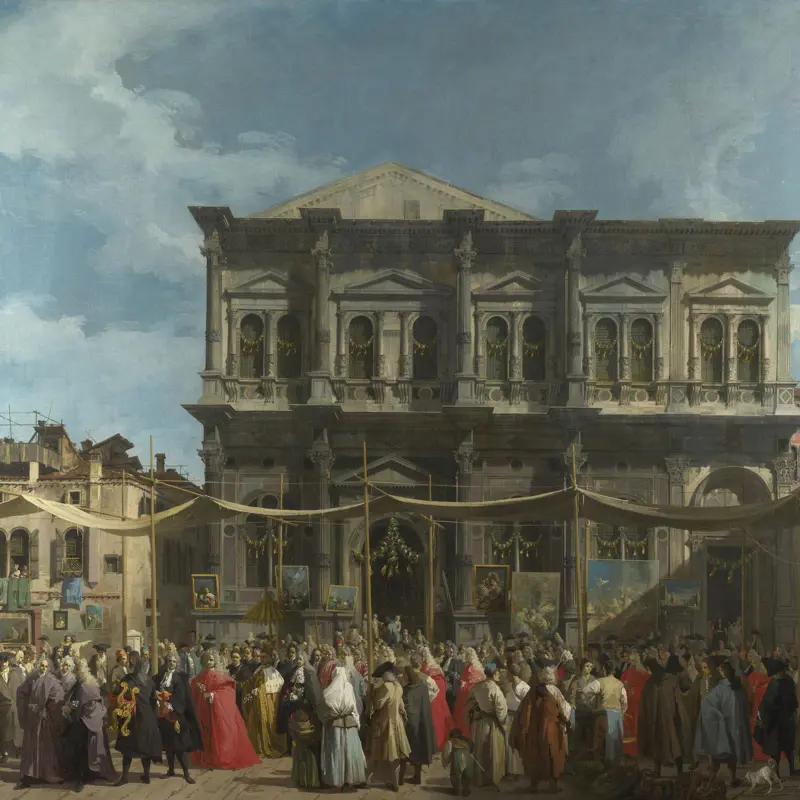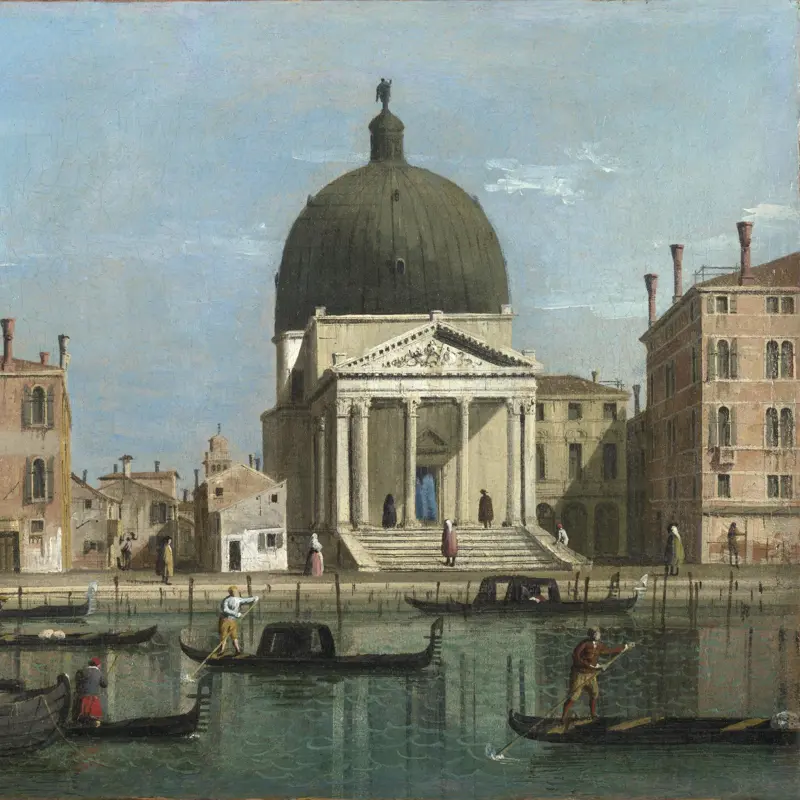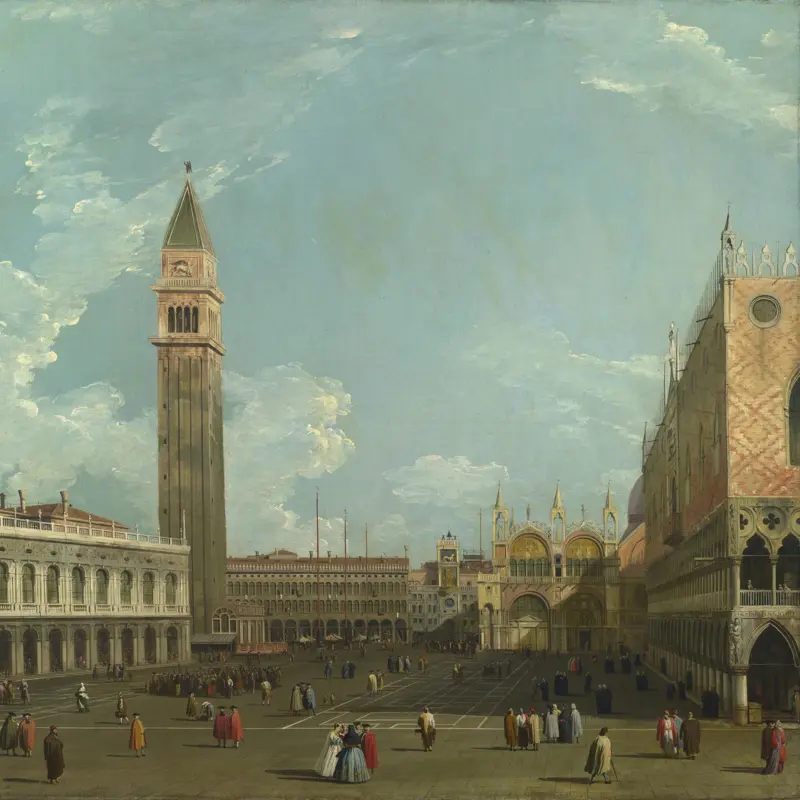Canaletto, 'Venice: Entrance to the Cannaregio', probably 1734-42
About the work
Overview
Gondolas glide across the water, passing fishing boats which direct our gaze towards the mouth of the Cannaregio Canal, Venice’s largest waterway after the Grand Canal.
The Ponte delle Guglie (‘bridge of the obelisks’) spans the water. We can just make out the tiny silhouettes of people crossing it, while others emerge into the sunlight along the waterfront. Beyond this is an area known as the ghetto, where, from the early sixteenth century, the Jewish population was forced by decree to live.
Canaletto altered the view to make a more dramatic composition: the facade of the house on the far right is at a sharper angle here than in reality, the bridge is closer to us and the Cannaregio more open, making it easier to see the buildings on both sides. Canaletto’s scenes from the late 1730s tend to have have a cooler, more wintry light, which we can see here – especially in the wispy pink clouds.
Key facts
Details
- Full title
- Venice: Entrance to the Cannaregio
- Artist
- Canaletto
- Artist dates
- 1697 - 1768
- Date made
- Probably 1734-42
- Medium and support
- Oil on canvas
- Dimensions
- 48 × 80.2 cm
- Acquisition credit
- Bequeathed by John Henderson, 1879
- Inventory number
- NG1058
- Location
- Not on display
- Collection
- Main Collection
- Previous owners
Provenance
Additional information
Text extracted from the ‘Provenance’ section of the catalogue entry in Michael Levey, ‘National Gallery Catalogues: The Seventeenth and Eighteenth Century Italian Schools’, London 1986; for further information, see the full catalogue entry.
Exhibition history
-
2015Canaletto and the Conquest of LightHôtel de Caumont6 May 2015 - 20 September 2015
-
2023Masterpieces from the National GalleryShanghai Art Museum East17 January 2023 - 7 May 2023National Museum of Korea2 June 2023 - 9 October 2023Hong Kong Palace Museum22 November 2023 - 11 April 2024Chimei Museum2 May 2024 - 1 September 2024
Bibliography
-
1857G.F. Waagen, Treasures of Art in Great Britain: Being and Account of the Chief Collections of Paintings, Drawings, Sculptures, Illuminated Mss. […], translated from German by Elizabeth Eastlake, 3 vols, London 1857, vol. 3
-
1904G.A. Simonson, Francesco Guardi, London 1904
-
1956Levey, Michael, National Gallery Catalogues: The Eighteenth Century Italian Schools, London 1956
-
1971M. Levey, The Seventeenth and Eighteenth Century Italian Schools, London 1971
-
1975L. Puppi, Tout l'oeuvre peint de Canaletto, Paris 1975
-
1976W.G. Constable and J.G. Links, Canaletto: Giovanni Antonio Canal, 1697-1768, revised edn, Oxford 1976
-
1978H. Potterton, 'Canaletto's Views of S.Geremia and the Entrance to the Cannaregio', The Burlington Magazine, CXX/904, 1978, pp. 469-70
-
1984M.A. Chiari, 'Nuove osservazioni su Canaletto e la camera ottica', Arte veneta, XXXVIII, 1984
-
1985A. Corboz, Canaletto: Una Venezia immaginaria, Milan 1985
-
1986Levey, Michael, National Gallery Catalogues: The Seventeenth and Eighteenth Century Italian Schools, London 1986
-
1989W.G. Constable and J.G. Links, Canaletto: Giovanni Antonio Canal, 1697-1768, 3rd edn, Oxford 1989
-
1990K.T. Parker and C. Crawley, The Drawings of Antonio Canaletto in the Collection of Her Majesty the Queen at Windsor Castle, Bologna 1990
-
1991M. Levey, The Later Italian Pictures in the Collection of Her Majesty the Queen, 2nd edn, Cambridge 1991
-
1994B. Boucher, Andrea Palladio: The Architect in His Time, New York 1994
-
1994J.G. Links, Canaletto, revised edn, London 1994
-
2001
C. Baker and T. Henry, The National Gallery: Complete Illustrated Catalogue, London 2001
About this record
If you know more about this work or have spotted an error, please contact us. Please note that exhibition histories are listed from 2009 onwards. Bibliographies may not be complete; more comprehensive information is available in the National Gallery Library.

